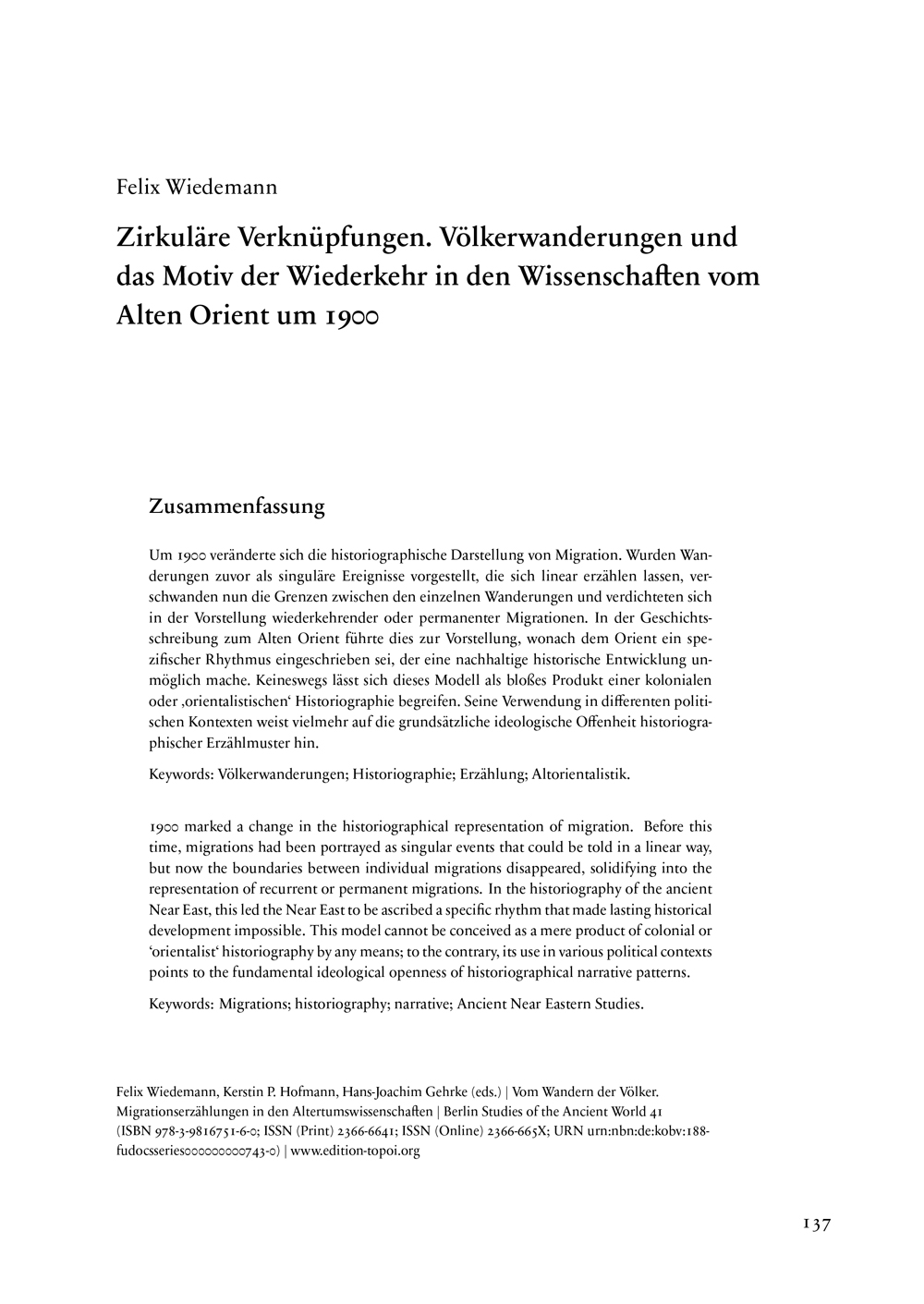Zirkuläre Verknüpfungen. Völkerwanderungen und das Motiv der Wiederkehr in den Wissenschaften vom Alten Orient um 1900
1900 marked a change in the historiographical representation of migration. Before this time, migrations had been portrayed as singular events that could be told in a linear way, but now the boundaries between individual migrations disappeared, solidifying into the representation of recurrent or permanent migrations. In the historiography of the ancient Near East, this led the Near East to be ascribed a specific rhythm that made lasting historical development impossible. This model cannot be conceived as a mere product of colonial or ‘orientalist‘ historiography by any means; to the contrary, its use in various political contexts points to the fundamental ideological openness of historiographical narrative patterns.
Um 1900 veränderte sich die historiographische Darstellung von Migration. Wurden Wanderungen zuvor als singuläre Ereignisse vorgestellt, die sich linear erzählen lassen, verschwanden nun die Grenzen zwischen den einzelnen Wanderungen und verdichteten sich in der Vorstellung wiederkehrender oder permanenter Migrationen. In der Geschichtsschreibung zum Alten Orient führte dies zur Vorstellung, wonach dem Orient ein spezifischer Rhythmus eingeschrieben sei, der eine nachhaltige historische Entwicklung unmöglich mache. Keineswegs lässt sich dieses Modell als bloßes Produkt einer kolonialen oder ‚orientalistischen‘ Historiographie begreifen. Seine Verwendung in differenten politischen Kontexten weist vielmehr auf die grundsätzliche ideologische Offenheit historiographischer Erzählmuster hin.

